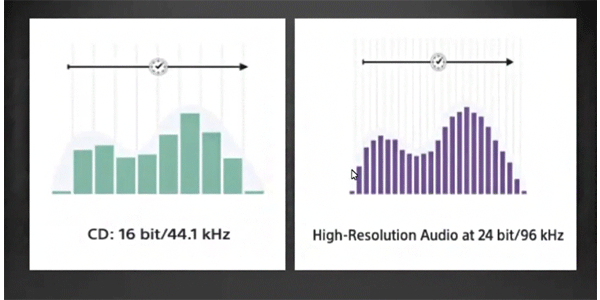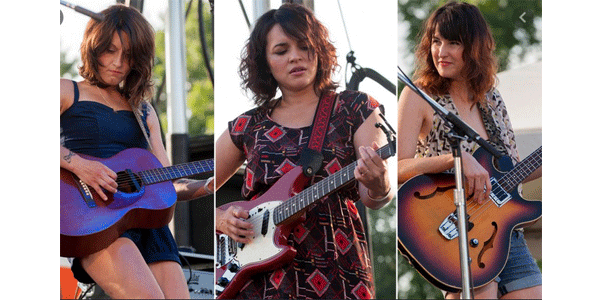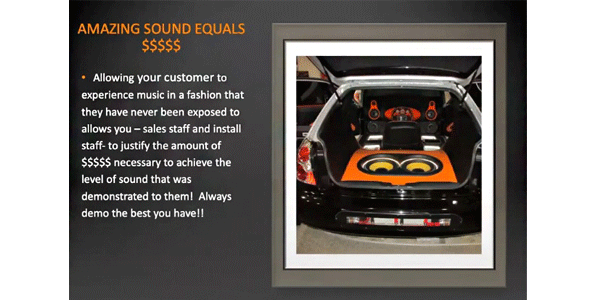Amazing sound equals money. If you demo amazing sound, customers will ask how to duplicate it in their car.
Here’s how to achieve that with Hi-Res Audio (HRA) along with an explanation of what Hi-Res is all about, according to an ORCA webinar led by National Sales Training Coordinator Nick Wingate. Also provided are tips on songs to demo (see the end of the article).
Hi-Res Audio is a digital file that you download or stream that offers better than CD quality.
Like a CD, it takes an analog sound wave and divides it up into digital bits of information. A CD takes 44,100 samples of the wave per second and HRA starts at 48,000 samples at a bit depth of 20. The result is audio that’s closer to the original performance. “That’s what this is all about,” said Wingate.
“Allowing your customer to experience music in a fashion that they have never been exposed to allows you to justify the amount of money necessary to achieve the level of sound… So always demo the best you have,” said Wingate. And the best is Hi-Res Audio.

Hi-Res Audio Codecs
With so much audio information in an HRA file, it must be compressed so it can be transferred and then decompressed to be played back. Codecs are devices or programs that do exactly that. They squeeze down files so they don’t take up so much room.
The most popular codec is FLAC introduced in 2001. It doesn’t lose any music (lossless) in digital transmission.
Apple devices can’t play FLAC files without an additional app being used. Apps you can download for this purpose include Flacbox and Onkyo HF Player
Another codec is WAV. It’s less efficient data-wise and takes up a lot of room. It was developed in the early 90s by IBM and Microsoft.
There are yet other codecs but a key one to remember is Direct Stream Digital or DSD. It is called the audiophile codec of choice. Sampling rates start at 2.8kHz and go up to 11.2MHz, which means that DSD files slice the audio wave 256 times faster than a standard CD. Instead of a bit rate say of 24 characters, it looks at just one bit or one character at a time. At the rate of 11.2 million times a second, it takes the bit info, either a one or zero, and splices it 11.2 million times and examines it. The drawback is the files are huge and take up a lot of room on a hard drive. A 1 terabyte hard drive might normally store thousands of songs, but with DSD files, it would only hold hundreds. “But it sounds closer to vinyl than anything out there,” said Wingate.

Hi-Res Audio Streaming Codecs
MQA is yet another codec. It was designed by high end audio company Meridian Audio. It takes huge amounts of digital music that can be packed into a small amount of storage space. MQA can squeeze a 24 bit/192kHz file into the space you would normally need for a CD file (16bit/44.1khz). [Tidal’s Masters premium service will stream in MQA].
AptX (Audio Processing Technology) is the original codec for broadcasters to store CD quality audio on a hard drive. Developed by Qualcomm, it is still used and has been deployed widely in phones, headphones, digital audio players and soundbars. It gets 16bit/48khz at its best. It’s widely used on devices from Samsung, LG, and others.
AptX-HD is an enhancement that can stream in 24 bit instead of 16 bit, but sampling remains at 48khz at its best. (It’s not available yet on car head units, said Wingate).
LDAC is one of the better ways to listen to HRA. It can stream 24bit /96kHz and it operates without any down-conversion of HRA except for DSD files. LDAC, developed by Sony, allows 3X more data to be transmitted wirelessly than other Bluetooth codecs.
Standard Bluetooth A2DP streams [email protected] (which is not Hi Res). LDAC Bluetooth streams at [email protected], which will support 24bit/96khz audio, according to Sony.
Hi-Res Audio Playback
Devices for Hi-Res Playback include Digital Audio Players from brands such as Astell and Kern and FiiO, smartphones (from Qualcomm and Samsung) and the Sony head unit, RSX-GS9. Each can playback HRA files and some can also play DSD files.
Some aftermarket suppliers also offer head units that can playback LDAC wireless and FLAC files. Many can accept a 24bit/96khz signal but they will downsample it to 16bit/44.1khz so it is not true HRA playback.
Apple phones require Flacbox or an Onkyo HF Player. Once they are downloaded to your phone, you can play FLAC, LDAC and even DSD files.
Mosconi offers devices built specifically for smartphones to receive HRA, including the Mosconi DPS AMAS 96K.
How to Find HRA Music
Acoustic Sounds and HDtracks are two key sources for Hi-Res music. Additionally, Qobuz, a streaming service, also lets you download HRA files.

Examples of Music to Demo
Puss n Boots (Norah Jones, Sasha Dobson and Catherine Popper). Preferred track: “It’s Not Easy.” Look for the three-part harmony. “You can hear the resonance in the vocalist’s chest. Tell the customer what to listen for. Available in 24bit/96k. “Sounds like you are there. It’s a whole new world,” Wingate said.
Tool. Album “Undertow.” Preferred track: “Sober.” “The bass track is amazing. The customer will want a good subwoofer and amplifier.” 24bit/96khz.
Vampire Weekend. Album “Father of the Bride.” Preferred track: Harmony Hall. “At the beginning of the song you hear the fret work on the acoustic guitar. You can hear each individual string.” 24bit/96khz
Nathaniel Rateliff. Album “And It’s Alright.” Preferred track: “All or Nothing.” “The amount of ambiance and reverberation; you can hear the studio amps hissing in the background.” 24bit/96khz.
Diana Krall. Album “This Dream of You.” Preferred track: “How Deep is the Ocean.” “The three-dimensionality on this track makes you feel like you are there…It’s great to demo imaging and staging. You literally get a sense that they are in a small room.” 24bit/48khz.
Fleetwood Mac. Album “Rumors.” Take your pick of songs. Wingate likes “Gold Dust Woman.” The album has been remastered in 24bit/96khz. This is the 11th best-selling album of all time. “In ‘Gold Dust Woman,’ Stevie Nicks’ voice is so distinct and Mick Fleetwood’s drum work is tremendous… you can hear how Lindsey Buckingham plucks the strings.” 24bit/96khz.
Non-HRA Music to Demo
Johnny Cash. Album “American IV: The Man Comes Around.” Track: “Hurt”
Ghost Rider. Felt. CD format. “It’s been used by many audio companies around the world to demo products. Tremendous dynamics. It’s the best song I have heard for demonstrating sub bass to mid bass transition,” said Wingate.










Thank you Nick. I do presently use the Sony unit – great thing. I was hoping there would be a way to use iPhone as I described via an outboard DAC of my choosing, either a car audio item like a Brax DSP or a home audio product like a Benchmark DAC/pre-amp. Basically, I’m trying to avoid routing through a headhunt – Sony or OEM – entirely, but I guess there is no way to do that air this time. Thanks again for your informative insights.
Greetings!
You can use the lightning to usb adapter cable to get a digital output off of an Iphone. I am not sure about home audio but in car audio, specifically the Sony RSX-GS9 head unit you can use an I phone cable and a usb to digital camera cable. The Sony requires the USB Mini cable to plug into the head unit. If you have both the adaptor and primary cable and you download an app such as Onkyo HF player you can play back files up to DSD 11.2 mhz. That is the only way I know that you can get a high res signal out of Iphone that i know of.
Thank you Nick!
Regarding Apple iPhone and its Lightning connector and referencing what you wrote, “Apple phones require Flacbox or an Onkyo HF Player. Once they are downloaded to your phone, you can play FLAC, LDAC and even DSD files.”, if these apps are used, can a Lightining to USB adapter, or other such adapter with a means of extracting an audio signal conventionally, be utilized?
I see a predominance of iPhone usage and a proclivity of those users to only want the content that is available from their phone.
In recent past, I was using devices called Digital Transports. There no longer seem to be any models available, from any maker, but these would pull the native audio signal out of the Lightning ports, which I would then route to an outboard high quality DAC. It was perfect, really, until this class of device went obsolete.
Is there a new way to do what I did with Digital Transports? Will the apps you mentioned, along with an accompanying adapter do the same?
Many thanks for your informative article.